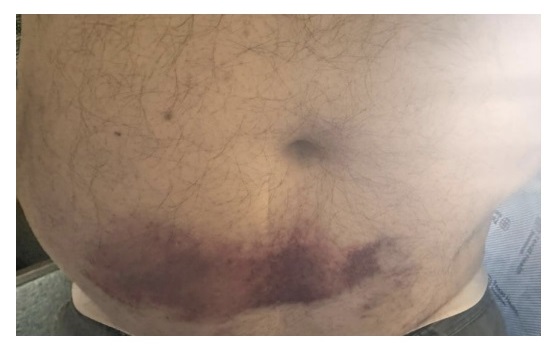Case Presentation: Acquired hemophilia A is a rare disorder related to autoantibodies against factor VIII (Fc VIII) and reduced Fc VIII/VIII inhibitors causing bleeding. The incidence is 1 to 1.5 per million a year with 78 years as a median. Diagnosis is crucial due to the mortality can include spontaneous hemorrhages into skin, muscles, soft tissues, or mucous membranes. Risk factors are malignancy, autoimmune diseases, and pregnancy. 73-year-old male with diabetes, hypertension, chronic kidney disease, and renal cancer, presented with multiple admissions for 3 months when he had a posterior tibial deep vein thrombosis with initiation of apixaban, 1 month after he had left lower extremity angiogram with stent placement and balloon angioplasty due to peripheral arterial disease, 3 weeks ago, leg ecchymosis, shortness of breath, and fatigue causing the discontinuation of apixaban. At our facility, he had acute persistently bleeding after an atraumatic left elbow laceration without bleeding control. On exam, a 3.5 cm laceration on the left olecranon and 13 cm of ecchymosis on the right lower abdomen on the insulin injections site, ecchymoses on upper and lower extremities, and pale conjunctiva. Lab revealed hemoglobin of 7.1 g/dL, PT of 14.3 seconds, and PTT of 107.9 seconds. CT revealed a spiculated mass in the left upper lung lobe with surrounding ground glass opacities, a persistent collection in the right anterior abdominal wall, and no evidence of primary or metastatic disease. MRI showed splenomegaly, hematoma of the right anterior abdomen with inflammation, and fatty calcified mass on the lower pole of the left kidney, stable from prior exam, and no evidence of primary metastatic neoplasm. An isolated prolonged PTT followed a mixing study showing an inhibitor with Fc VIII activity below the lower limit of detection (< 6.8%). A chromogenic Fc VIII was < 1% and the Bethesda assay was 35.6 Bethesda units. These results, accompanying history, and 3 weeks since the discontinuation of apixaban confirmed acquired hemophilia A. For initial therapy cyclophosphamide, Decadron, and Rituximab (CyDRi) were indicated for inhibitor eradication, with Emicizumab and recombinant coagulation factor VIIa added for the bleeding. Also, immunosuppressive therapy and factor VIII activity is expected to return to normal within 3-4 weeks. He was discharged after the resolution of his persistent bleeding, approximately 12 days after admission.
Discussion: When profuse bleeding without a history of trauma presents, acquired hemophilia should be considered, especially if the bleeding is spontaneous and atraumatic. Clinics vary from bleeding in soft tissues to gastrointestinal, and hematuria. Severity ranges from mild to life-threatening, depending on the level of Fc VIII deficiency and the inhibitors.
Conclusions: In our case, it’s important to notice that since the first admission, the isolated prolonged PTT was there, and it should never go unexplained, especially in patients with risk factors.

